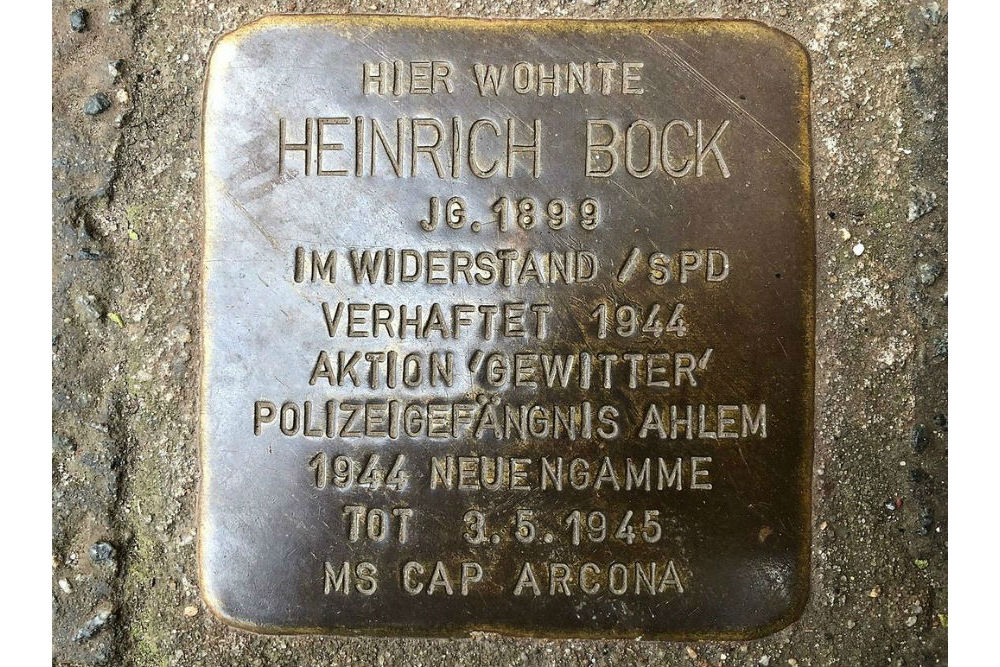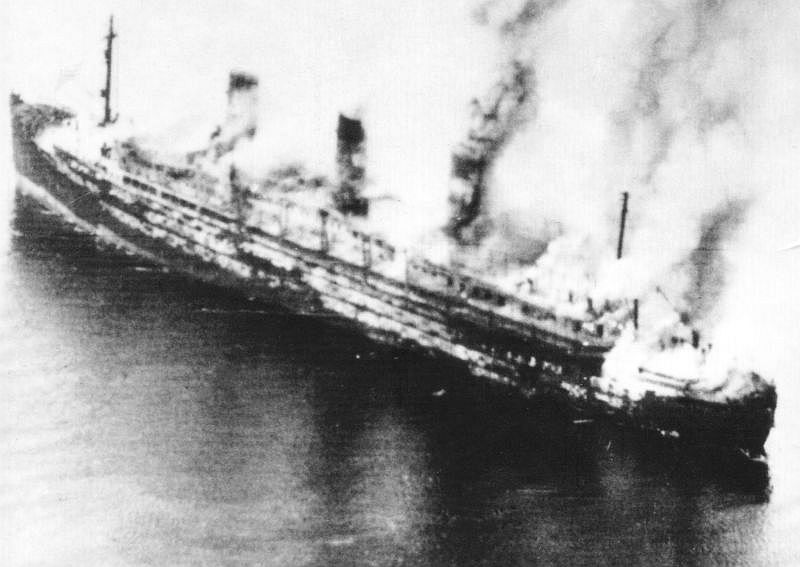Stumbling Stone Berckhusenstraße 32
This small, brass memorial plaque (Stolperstein or stumbling stone) commemorates:
* Heinrich Bock, born 1899, in the resistance/SPD, arrested 1944, Action "Gewitter," Ahlem police jail, 1944 Neuengamme, dead 3 May 1945, MS Cap Arcona.
Heinrich Bock was a politician and a resistance fighter. He was elected mayor of Hanover, first in 1929. Two weeks after he was re-elected in June 1933, the Nazis revoked his mandate and later arrested and released him. He belonged to a resistance group associated with factory workers. After the attempt to assassinate Hitler on 20 July 1944, Bock was arrested again, as part of Action Gitter (or Gewitter), in which on 22-23 August 1944 the Gestapo carried out mass arrests of persons associated with non-Nazi political views. Bock was first taken to the Ahlem police jail and then transferred to Neuengamme concentration camp at the end of August 1944.
When the Nazis emptied the Neuengamme camp in April 1945 before the arrival of the Allies, thousands of prisoners were put on the Cap Arcona, a ship which became an overcrowded concentration camp with no food and no drinking water. The Cap Arcona and several other floating concentration camps were hidden in plain sight among other troop ships. With a goal of keeping the Germans from escaping by boat, the British bombed the ships in the harbor. Approximately 7,000 concentration camp prisoners died by fire or drowning, or were shot by Germans on the shore.
Four days later, the Germans signed an unconditional surrender of all German forces to the Allies.
"Stolpersteine" is an art project for Europe by Gunter Demnig to commemorate victims of National Socialism (Nazism). Stolpersteine (stumbling stones) are small, 10x10cm brass plaques placed in the pavement in front of the last voluntary residence of (mostly Jewish) victims who were murdered by the Nazis. Each plaque is engraved with the victim’s name, date of birth, and place (mostly a concentration camp) and date of death. By doing this, Gunter Demnig gives an individual memorial to each victim. One stone, one name, one person. He cites the Talmud: "A human being is forgotten only when his or her name is forgotten."
For more information and photos about the Cap Arcona, please see Floating concentration camps in the Bay of Lübeck.
Do you have more information about this location? Inform us!
Source
- Text: Anne Palmer
- Photos: Nortix08
- Wikipedia: Heinrich Bock
- Wikipedia: Aktion Gitter
- Stolpersteine.eu
Related books
Nearby
Museum
Point of interest
- Air-Raid Shelter Welvenplatz - Hannover
- Aegidien-church Hannover - Hannover
- Information Signs Bismarck-tower and Book-burning Hanover - Hannover
Monument
- Concentrationcamp Hannover-Misburg - Misburg
- Jewish Memorial Hanover - Hannover
- Memorial General-von-Alten - Hannover
Cemetery
- German War Graves Freidhof an der Seelhorst - Hannover-Seelhorst
- Dutch War Cemetery Hanover - Hannover-Seelhorst
- Cemetery Prisoners Maschsee - Hannover







